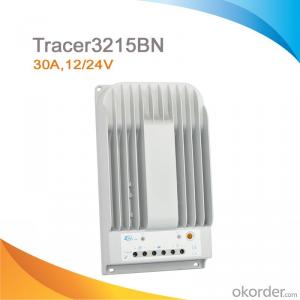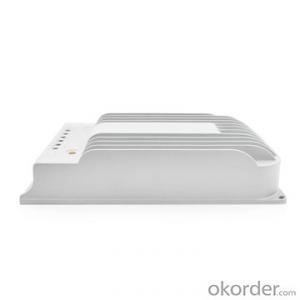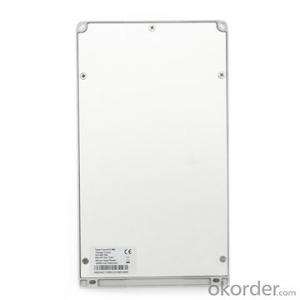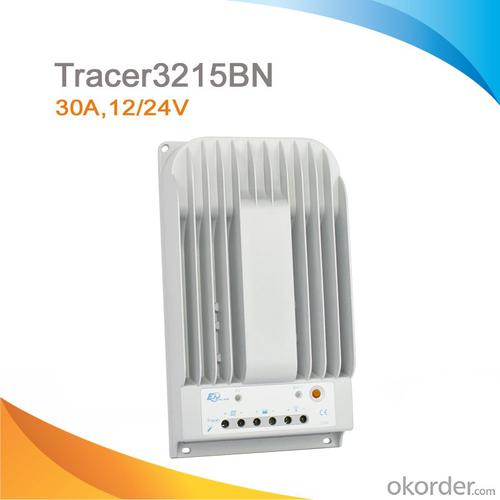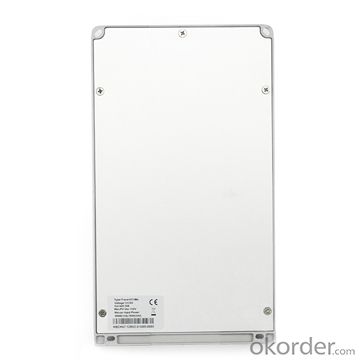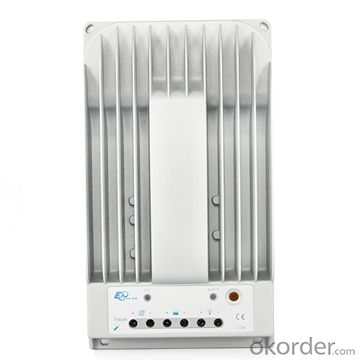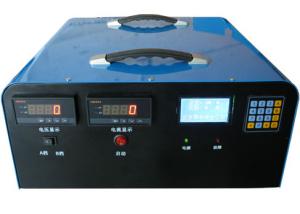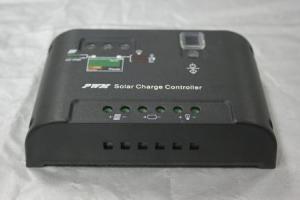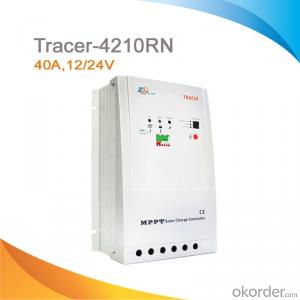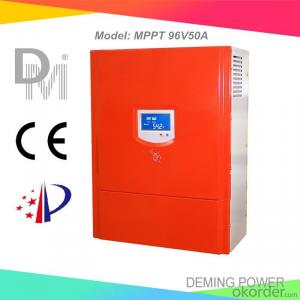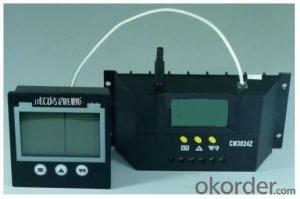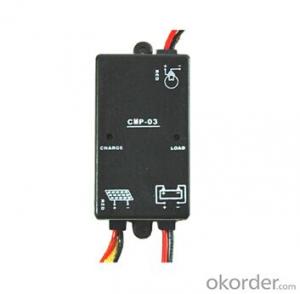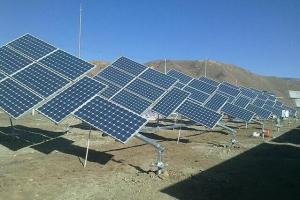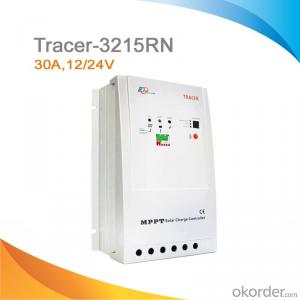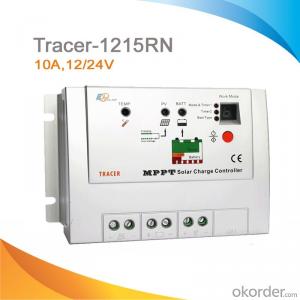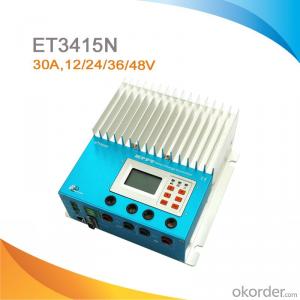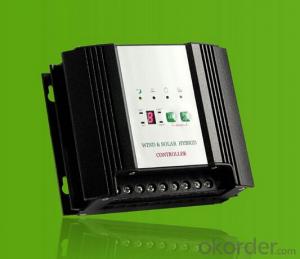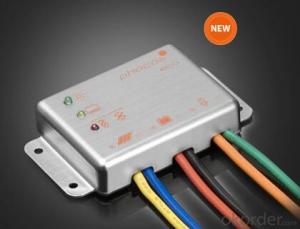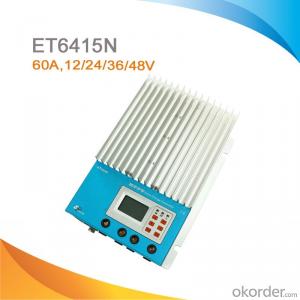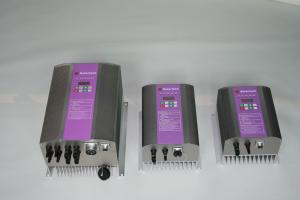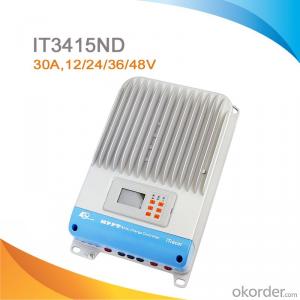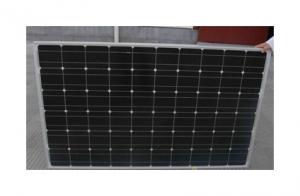Y Solar Charge Controllers MPPT Solar Charge Controller 30A, 12/24V, Tracer3215BN
OKorder Service Pledge
OKorder Financial Service
You Might Also Like
Descriptions:
A charge controller, or charge regulator is basically a voltage and/or current regulator to keep batteries from overcharging. It regulates the voltage and current coming from the solar panels going to the battery. Most "12 volt" panels put out about 16 to 20 volts, so if there is no regulation the batteries will be damaged from overcharging. Most batteries need around 14 to 14.5 volts to get fully charged.
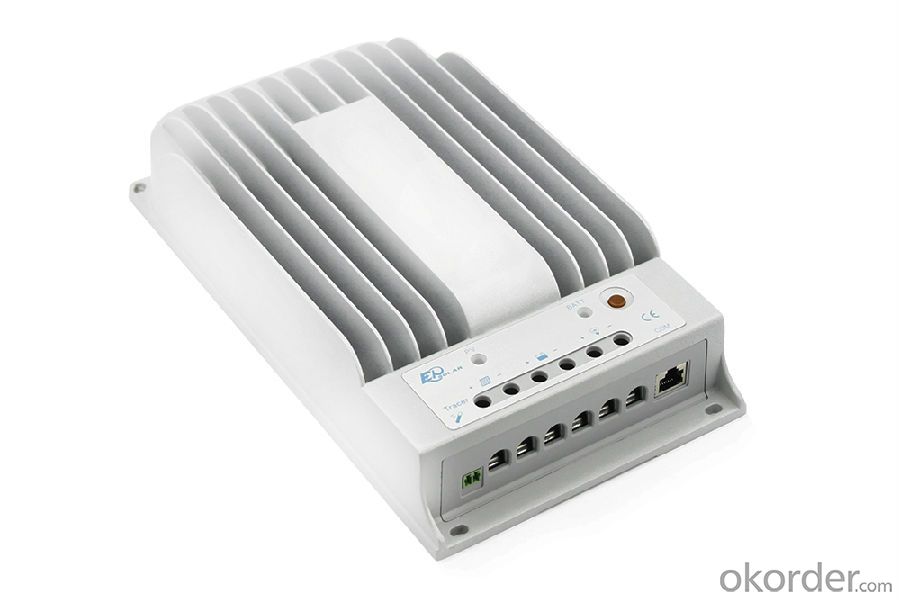
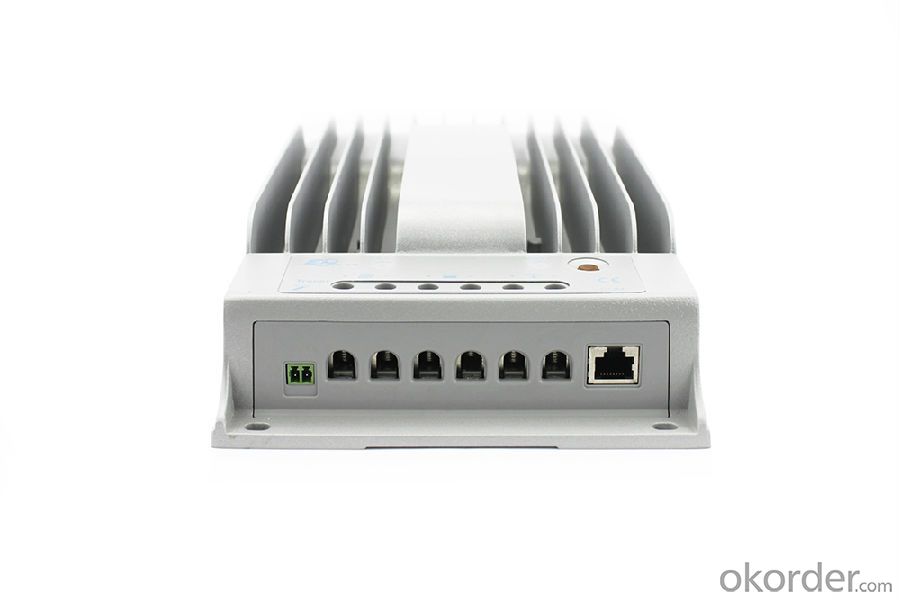
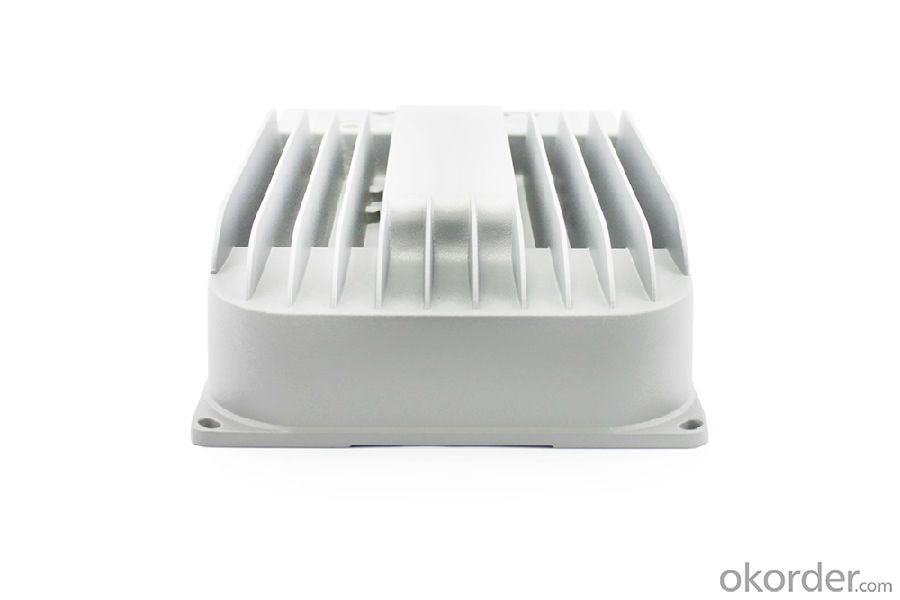
Specifications
10a,20a,30a,40a,12/24v auto work
Die-cast aluminum design
RS485 ports with MODBUS communication
option monitoring software
Features:
·Innovative MPPT technology
·Peak conversion efficiency of 98%
·High tracking efficiency up to 99%
·Several seconds tracking speed
·Die-cast aluminum design and nature cooling
·Temperature compensation
·Diversified load control to meet different requirements
·Four battery type options: Sealed, Gel, Flooded, and USER
·Intelligent lighting and timer control for solar lighting system
·Energy statistics function
·RS485 ports with MODBUS communication protocol
·Optional PC monitoring software and remote meter for real-time monitoring and battery management parameter setting
·Field upgradable firmware
Electronic Protections:
·PV short circuit protection
·PV overvoltage alarm protection
·PV current limiting protection
·PV reverse polarity protection
·Battery overcharge protection
·Battery over discharge protection
·Battery reverse polarity protection
·Load overload protection
·Load short circuit protection
·Overheating protection
Model | Tracer3215BN |
Nominal system voltage | 12/24V auto work |
Rated battery current | 30A |
Rated load current | 20A |
Max. PV open circuit voltage | 150V |
Max. battery voltage | 32V |
Max. PV input power | 390W (12V) |
780W (24V) | |
Equalize charging voltage | Sealed: 14.6V, Flooded: 14.8V, USER: 9~17V |
Boost charging voltage | Gel: 14.2V, Sealed: 14.4V, Flooded: 14.6V, USER: 9~17V |
Float charging voltage | Gel /Sealed /Flooded: 13.8V, USER: 9~17V |
Low voltage reconnect voltage | Gel /Sealed /Flooded: 12.6V, USER: 9~17V |
Low voltage disconnect voltage | Gel /Sealed /Flooded: 11.1V, USER: 9~17V |
Self-consumption | ≤50mA(12V) ≤27mA(24V) |
Grounding | Common negative |
Temp. compensation | -3mV/℃/2V |
Communication Port | RS485 / RJ45 interface |
Working temperature | -35℃~+55℃ |
Storage temperature | -35℃~+80℃ |
Humidity | ≤95% N.C. |
Enclosure | IP30 |
Overall dimension | 281x160x60mm |
Terminal | 16mm2 |
Net weight | 2.3kg |
- Q: Can a solar controller be used with solar panels of different brands?
- Yes, a solar controller can be used with solar panels of different brands as long as the voltage and current ratings of the panels are compatible with the controller. The controller's main function is to regulate the charging process and protect the batteries, regardless of the brand of the solar panels being used.
- Q: How does a solar controller handle temperature compensation for the battery?
- A solar controller handles temperature compensation for the battery by adjusting the charging voltage based on the battery's temperature. The controller monitors the battery's temperature and compares it to a predetermined temperature compensation curve. This curve determines the appropriate charging voltage for the battery at different temperature levels. When the battery is cold, the controller increases the charging voltage to ensure efficient charging and prevent undercharging. In cold temperatures, the battery's internal resistance increases, which can lead to a drop in charging efficiency. By increasing the charging voltage, the controller compensates for this increase in resistance and provides the necessary energy to fully charge the battery. On the other hand, when the battery is hot, the controller reduces the charging voltage to prevent overcharging. High temperatures can accelerate the battery's chemical reactions, leading to increased gassing and loss of electrolyte. By lowering the charging voltage, the controller prevents overcharging, which not only prolongs the battery's lifespan but also ensures its safety. Overall, the temperature compensation feature of a solar controller optimizes the charging process by adjusting the charging voltage to match the battery's temperature. This helps maintain the battery's performance, prolong its lifespan, and ensure efficient and safe charging.
- Q: Can a solar controller be used in a solar-powered electric bus charging system?
- Yes, a solar controller can be used in a solar-powered electric bus charging system. A solar controller helps regulate the flow of electricity from the solar panels to the batteries, ensuring efficient charging and preventing overcharging or damage to the batteries. It is an essential component in managing the charging process in a solar-powered electric bus charging system.
- Q: Can a solar controller be used with solar-powered indoor vertical farming systems?
- Yes, a solar controller can be used with solar-powered indoor vertical farming systems. A solar controller is an essential component of a solar power system as it regulates the flow of electricity from the solar panels to the batteries, ensuring optimal charging and preventing overcharging. In the context of indoor vertical farming systems powered by solar energy, a solar controller helps manage the energy generated by the solar panels, storing it in batteries for later use or directly powering the system. It helps maintain a stable power supply, prevents damage to the batteries, and maximizes energy efficiency. Therefore, using a solar controller with a solar-powered indoor vertical farming system is highly recommended to ensure reliable and efficient operation.
- Q: Can a solar controller be used with a solar-powered electric vehicle charging station for public use?
- Yes, a solar controller can be used with a solar-powered electric vehicle charging station for public use. A solar controller helps regulate the flow of electricity from the solar panels to the charging station, ensuring efficient charging and protecting the batteries from overcharging. It also allows for monitoring and control of the charging station's performance.
- Q: Are there any energy-saving features in a solar controller?
- Solar controllers typically have various energy-saving features. One notable feature is their ability to regulate and optimize battery charging in the solar system. This ensures efficient charging, preventing overcharging and extending battery lifespan. Additionally, solar controllers often include a low voltage disconnect (LVD) feature. When the battery voltage drops below a certain level, the load automatically disconnects to prevent excessive discharge, which can harm the batteries. Some advanced solar controllers even have maximum power point tracking (MPPT) technology. This technology continuously adjusts voltage and current to match ideal operating conditions, maximizing energy harvested from the solar panels. As a result, the overall energy efficiency of the solar system is significantly improved.
- Q: Can a solar controller be used with a solar-powered satellite dish?
- Yes, a solar controller can be used with a solar-powered satellite dish. A solar controller is essential for regulating the power output from the solar panels and ensuring that the satellite dish receives a consistent and stable power supply. It helps protect the batteries from overcharging and optimizes the energy conversion process. Thus, a solar controller is a crucial component in the functioning of a solar-powered satellite dish.
- Q: Can a solar controller be used with solar panel shading analysis systems?
- Yes, a solar controller can be used with solar panel shading analysis systems. A solar controller is an essential component of a solar power system, as it regulates the flow of electricity between the solar panels and the batteries or grid. It ensures that the batteries are charged efficiently and protects them from overcharging or damage. Solar panel shading analysis systems, on the other hand, are used to determine the impact of shading on the performance of solar panels. These systems use various techniques such as satellite imagery, shade analysis software, or on-site measurements to identify areas that may experience shading throughout the day. By combining a solar controller with a shading analysis system, it is possible to optimize the performance and efficiency of a solar power system. The shading analysis data can be used to identify the areas that receive the most sunlight and adjust the positioning or tilt of the solar panels accordingly. The solar controller can then regulate the flow of electricity from the panels to ensure maximum power generation, even in shaded conditions. Overall, using a solar controller in conjunction with a shading analysis system allows for better monitoring and control of a solar power system, leading to increased efficiency and improved performance.
- Q: How do you determine the appropriate size of a solar controller for your system?
- To determine the appropriate size of a solar controller for your system, you need to consider two main factors: the maximum current and the voltage of your solar panels. Firstly, calculate the maximum current your solar panels will generate by dividing the total wattage of the panels by the system voltage (typically 12V or 24V). This will give you the required amperage capacity of the solar controller. Secondly, ensure that the solar controller's voltage rating matches the voltage of your system. By considering these factors, you can determine the appropriate size of a solar controller that will effectively handle the power generated by your solar panels.
- Q: How do you prevent short-circuiting of solar panels with a solar controller?
- To prevent short-circuiting of solar panels with a solar controller, it is crucial to ensure proper wiring and connections. This can be achieved by following a few key steps: 1. Use the correct wire size: Select wires that are appropriate for the current capacity of your solar panels. Oversized wires can cause short circuits, so it is essential to determine the appropriate wire gauge based on the system's specifications. 2. Install proper fuses or circuit breakers: Incorporate fuses or circuit breakers in the wiring system to protect against short circuits. These devices will automatically cut off the power supply in case of a fault, preventing any damage to the solar panels. 3. Implement proper grounding: Ensure that the solar panels and the solar controller are properly grounded. This helps to dissipate any excess electrical charge and prevents the risk of short circuits. 4. Maintain clean and debris-free connections: Regularly inspect and clean the connections between the solar panels and the solar controller. Dust, dirt, or other debris can cause short circuits, so it is vital to keep the connections clean and free from any obstructions. By following these precautions, the risk of short-circuiting in solar panels can be significantly reduced, ensuring optimal performance and longevity of the system.
Send your message to us
Y Solar Charge Controllers MPPT Solar Charge Controller 30A, 12/24V, Tracer3215BN
OKorder Service Pledge
OKorder Financial Service
Similar products
Hot products
Hot Searches
Related keywords
